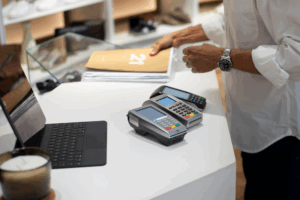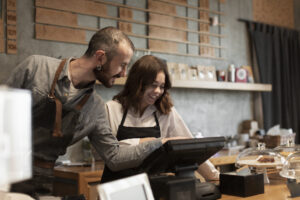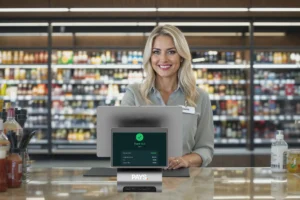
How to Use Facebook Ads for Restaurants
Tuesday evening Maria’s was cleaning a table twelve for the third time tonight cause there’s literally nothing else to do. This place holds sixty people and she’s got eight customers. Two couples was sharing dessert, some guy eating alone at the bar scrolling Instagram. Meanwhile her nonna’s marinara same recipe that made her cry at seven years old, just sitting in the kitchen going to waste.
Three months later people are calling begging for weekend tables. Booked solid for two weeks straight. She hired four servers cause she couldn’t handle it anymore. What happened? Facebook ads. But not the way you think. Took her forever to figure this crap out.

That One Day That Changed Everything
Know what’s annoying as hell? Spending $800 on a newspaper ad that brings in zero customers. ZERO. Maria did this last spring. Same week her nephew finds three new restaurants just scrolling Facebook during his lunch break.
Something’s seriously wrong here.
Her customers quit reading newspapers like five years ago. They’re glued to phones, picking dinner spots from whatever pops up in their feeds. Facebook killed Yellow Pages but made it way smarter. You can literally put your restaurant right in front of people already thinking about food.
Numbers don’t lie. Everyone’s on Facebook and most people check it before picking restaurants. Maria wasn’t missing customers she was invisible.
Tommy told her everything straight. “If you don’t use Facebook, you don’t exist.”
Harsh but true.
Learning This Facebook Thing (Total Nightmare)
Maria’s first Facebook ad sucked. Really bad. She boosted some blurry spaghetti photo saying “Great food here!” Spent fifty bucks hitting people in three different states.
Results? Nothing.
Tommy had to teach her Facebook basics. First lesson hurt: stop thinking like a restaurant owner, start thinking like someone scrolling at dinner time wondering what sounds good.
Facebook Business Manager looked like rocket science. Buttons everywhere, menus inside menus, words she’d never seen. She tackled it piece by piece though. Business account—check. Link restaurant page—check. Install this “pixel” thing on website (Tommy did that part). Payment stuff—done.
Pixel thing was creepy. Software that watches what people do on your website. But then she got it—perfect memory for everyone who looked at her menu online. Show ads to those exact people later. Sneaky but smart.
Two weeks later she finally stopped advertising to people in Pittsburgh who’d never drive to Columbus for Italian food.
Finding People Who Actually Want Your Food
Nobody tells restaurant owners this: trying to please everyone means boring everyone. Maria wasted years doing this, wondering why her marketing felt so meh.
Facebook made her get specific about who she wanted as customers.
She watched her regulars differently. Friday date night couple? Late twenties, nice cars, lived close by. Wednesday lunch people? Office workers needing something better than Subway but faster than fine dining.
Facebook targeting blew her mind. She could reach women 28-45, within fifteen miles, in relationships, making decent money, who liked Italian food. Or men 35-55, working nearby, eating lunch out regularly.
Lightbulb moment: she ran five different restaurants in one building. Date people wanted romance. Families needed kid stuff. Business lunch crowd wanted fast quality. Weekend parties needed group space. Each needed different messages.
No more “we have good food” garbage. Date ads showed candlelit tables. Family ads had happy kids. Business ads emphasized speed.
Making Food Look Incredible Online
Maria’s photos started awful. Blurry, orange-tinted disasters. But she learned something—great food ads don’t need perfect photos. They need to make people hungry.
Her iPhone worked better than fancy cameras. Natural window light during golden hour made everything look amazing without editing.
Real winner: showing the process, not just finished food. Videos of making fresh pasta got way more attention than food photos. People wanted to see the work behind their meal.
Her biggest hit was a simple video. Her grandfather’s old hands teaching her to fold tortellini while she told how the technique survived the boat ride from Italy. Three minutes, 150+ new customers, shared like crazy. People weren’t buying dinner—they bought family history.
Weird thing: amateur videos beat professional photos every time. Raw, unpolished stuff connected better than staged perfection. Her shaky kitchen tour during dinner rush got more engagement than any photo shoot.
Different Ads Do Different Things
Maria thought Facebook ads meant making one ad forever. Wrong. Good restaurant advertising is like being a DJ—different songs for different moments.
Awareness ads introduced her restaurant to new people. Wide nets, food lovers within twenty miles, compelling backstory videos. Goal wasn’t immediate reservations—just planting seeds.
Traffic ads pushed people to her website for menus and reservations. Hit folks interested in Italian food with drool-worthy photos and “Check tonight’s specials” calls.
Engagement ads built community on her Facebook page. Behind-scenes content, event announcements, customer chats. High engagement made other ads cheaper.
Conversion ads focused on getting reservations. Hit website visitors who didn’t book with time-sensitive offers like “Book by Sunday, free appetizer.”
Magic happened combining these. Someone sees grandmother recipe video, later spots weekend special ad, then gets first-timer discount. Each built on the last.
Spending Money Right
Maria started with fifty weekly—same as old newspaper ads. Mistake: spreading across too many campaigns.
Facebook tracks everything. Every click, view, reservation. She saw exactly which campaigns brought customers and which burned money.
Focus changed everything. Instead of ten campaigns with five-dollar budgets, she found two winners and funded them properly. These already proved they worked—why not feed them?
Budget grew with results. Fifty became hundred, then two hundred, four hundred during holidays. Every increase came from data, not hope. Good performance? More budget. Bad performance? Cut it.
Maria started with fifty weekly—same as old newspaper ads. Mistake: spreading across too many campaigns.
Facebook tracks everything. Every click, view, reservation. She saw exactly which campaigns brought customers and which burned money.
Focus changed everything. Instead of ten campaigns with five-dollar budgets, she found two winners and funded them properly. These already proved they worked—why not feed them?
Budget grew with results. Fifty became hundred, then two hundred, four hundred during holidays. Every increase came from data, not hope. Good performance? More budget. Bad performance? Cut it.
Seasonal stuff mattered. Slow months like January meant smaller budgets keeping existing customers happy. Busy seasons meant ramping up to catch extra demand.
Key thing: don’t spend more than competitors—spend smarter.
Numbers That Pay Bills
Likes feel nice but don’t pay rent. Maria focused on revenue metrics: reservation cost, customer spending, return visits.
Cost per reservation became her guide. Average customer spent forty-two dollars, returned four times yearly. She could spend twenty acquiring customers and still profit
Reservation rate showed how website turned browsers into diners. She tested different booking forms, simplified processes, tried various incentives. Small changes, huge impacts.
Customer lifetime value showed Facebook’s real power. Targeted customers were more loyal than walk-ins or other sources. They felt connected before arriving.
Return on ad spend was her report card. Consistent 5:1 during peaks—every ad dollar made five revenue dollars. Slower times, 3:1 while building relationships.
These numbers told real stories. Which audiences mattered, which content worked, which campaigns deserved more money.
Advanced Stuff That Works
Six months in, Maria used tactics most owners never find. Nothing complicated—just thinking past basic demographics and generic photos.
Story sequences changed everything. Instead of same ad repeatedly, she built emotional connections over time. First: grandmother’s story. Second: restaurant atmosphere. Third: dinner invitation. Each deepened relationships.
Weather campaigns adjusted automatically. Cold days triggered soup ads. Sunny days activated patio specials. Always felt perfectly timed.
Lookalike audiences were her secret weapon. Facebook found thousands like her existing customers who’d never heard of her place. These converted way better than demographic targeting.
Event targeting reached people during life moments—birthdays, anniversaries, promotions. Perfect timing for celebration dinners.
Dynamic ads showed specific menu items based on website behavior. Browse seafood? See cioppino ads later. Check desserts? Get tiramisu ads that make bloggers cry.
What Actually Happened
Eighteen months later, total transformation. Weekend reservations three weeks out. Eight new staff. Revenue tripled. Acquisition costs halved, customer value doubled.
Real win wasn’t numbers—watching families make memories with grandmother’s recipes, couples celebrating anniversaries at candlelit tables, travelers looking forward to lunch at Nonna’s as trip highlights.
Empty dining room nightmares became distant memory. Now she has wonderful chaos of thriving restaurant where every table tells stories, every dish carries traditions to new generations who actually get it.
Started with Facebook ads but really happened because Maria finally connected her passion with people who’d appreciate it. Every restaurant owner has this opportunity—just need to reach right people at right moment with right message.




